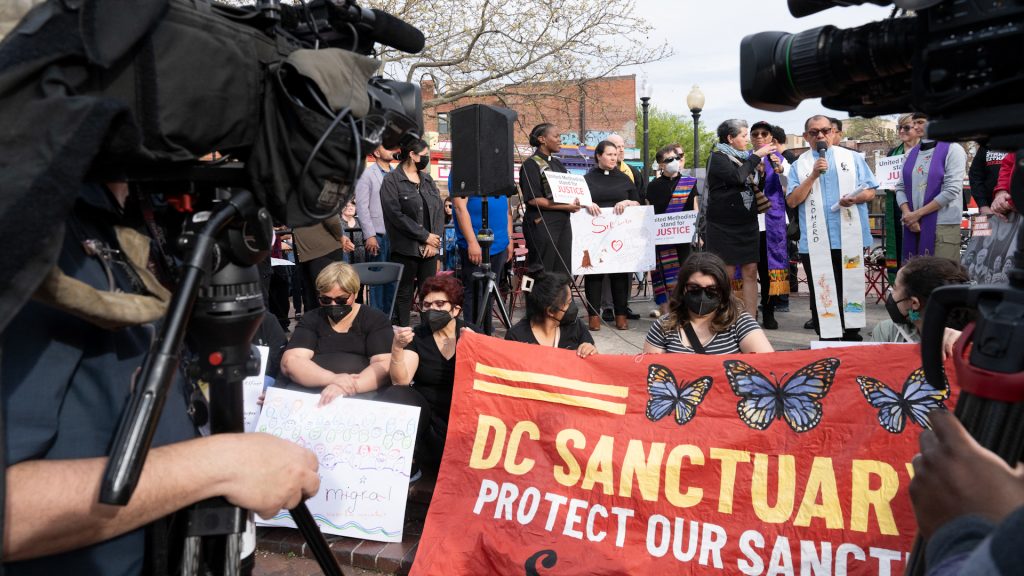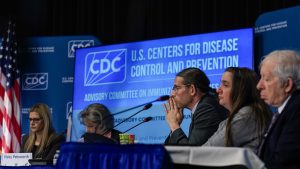Trump signs executive order cracking down on sanctuary cities
Ella Greene April 29, 2025 0
President Donald Trump signed a new executive order Monday, April 28, directing federal agencies to identify and pressure sanctuary cities and states that do not comply with immigration enforcement. The order instructs the attorney general and the secretary of Homeland Security to compile a list within 30 days of jurisdictions that limit cooperation with federal immigration authorities.
What does the order require?
Cities and states designated as “sanctuary jurisdictions” could face cuts to federal funding and potential civil or criminal legal actions if they do not change their laws or enforcement practices.
According to the White House directive, federal agencies must also ensure that residents in sanctuary jurisdictions are ineligible for public benefits. The Justice Department and Department of Homeland Security have been instructed to pursue all legal remedies available to enforce compliance.
Why is the White House taking this step?
The executive action follows a series of legal setbacks in the administration’s broader effort to increase deportations and limit sanctuary protections. A recent federal court ruling, citing constitutional concerns, blocked the administration from withholding federal funds from jurisdictions that have enacted laws restricting cooperation with immigration authorities.
White House Press Secretary Karoline Leavitt said the move is intended to enforce immigration law and protect public safety. “Obey the law, respect the law, and don’t obstruct federal immigration officials,” Leavitt said Monday, adding that the American public “made that quite clear” during the 2024 election.
Cities and states affected by Trump’s new executive order
Several major cities, including New York, Chicago, Boston, Los Angeles and Denver, as well as states like California, Oregon, Washington and Illinois, have sanctuary policies in place. These policies limit partnerships between local law enforcement and federal immigration officials, particularly regarding detainer requests and access to detainees.
Officials in affected areas pushed back on the announcement. Boston Mayor Michelle Wu reiterated the city’s position: “We stand with immigrants.”
A spokesperson for Chicago’s mayor called the order “fundamentally unconstitutional,” while New York City officials said they would review the directive while balancing federal cooperation with local community trust.
How is this order different from earlier actions?
The courts struck down previous attempts to penalize sanctuary jurisdictions for being vague and potentially coercive. Monday’s order seeks to address those concerns by requiring federal agencies to produce a formal list of targeted jurisdictions and justify any funding restrictions with clearer criteria.
The administration also plans to highlight recent moves aimed at lowering illegal border crossings and streamlining deportation procedures as part of a broader focus on immigration during Trump’s first 100 days in his second term.
What are the political and legal implications?
The order has deepened partisan divides over immigration policy. Republicans argue sanctuary cities obstruct federal law and pose a safety risk. Democrats and immigrant rights advocates counter that the administration is exceeding its authority and undermining local government.
Ella Rae Greene, Editor In Chief
Ella Greene
Ella and the staff at Clear Media Project (CMP) curate these articles.
Unless otherwise noted CMP does not write these articles.
The views, thoughts, and opinions expressed in the articles published on this blog belong solely to the original authors and do not necessarily reflect the views of the blog owner. The blog owner does not claim ownership of the content shared by contributors and is not responsible for any inaccuracies, errors, or omissions.
All rights and credits goes to its rightful owners. No Copyright Infringement is intended. If you believe any content infringes on your rights, please contact us for review and potential removal.





